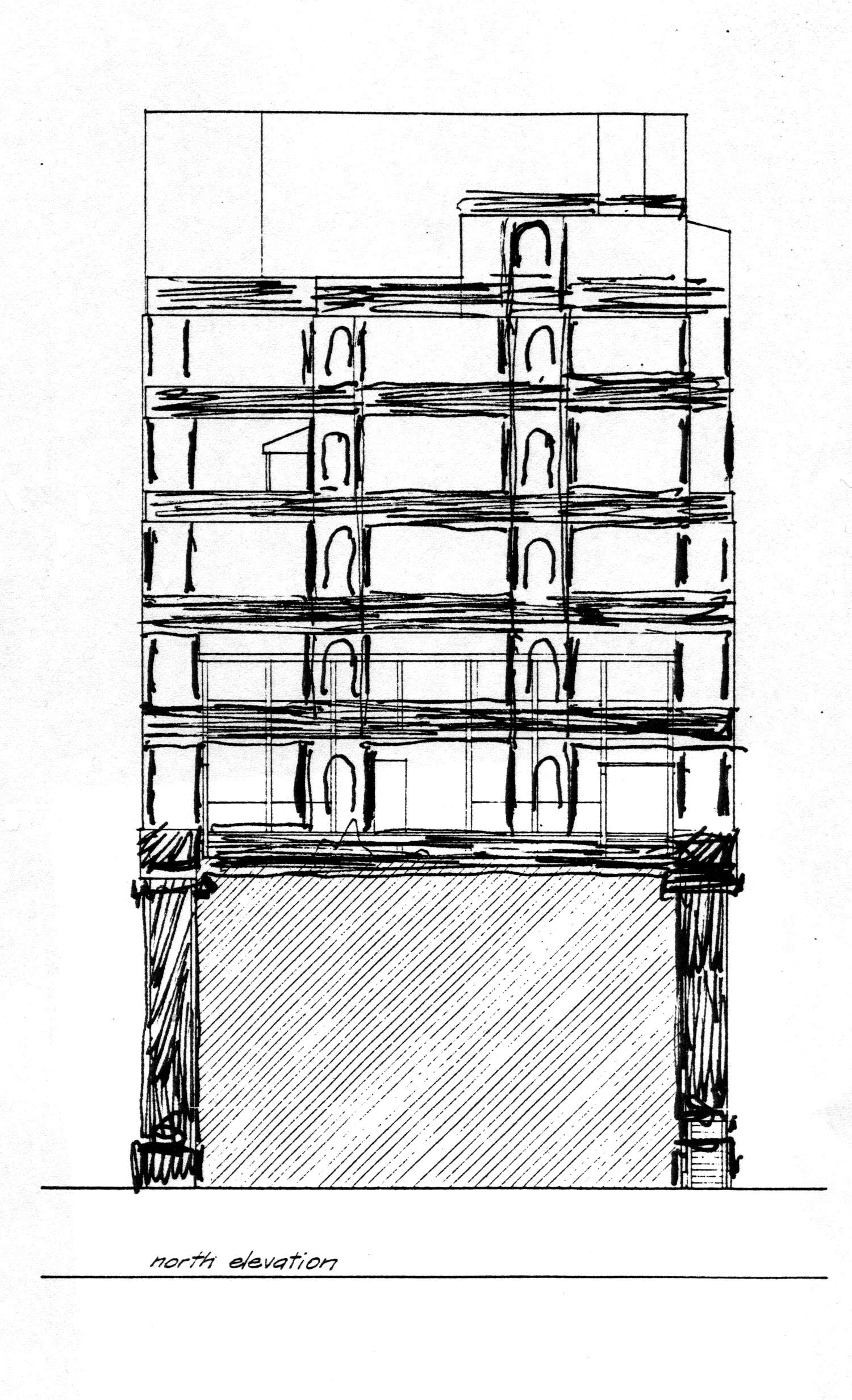
Sapporo Apartment Building: Structural order in the concrete-encased steel load bearing structure
1982This innovative structural scheme arose from the careful unfolding of the design with respect to user requirements, the impact of surrounding buildings, coupled with the fact that there was an untouchable small clinic on the site which had to be kept intact and therefore straddled. The above created a series of conditions requiring ten different plans at each of the ten floors.
The structural frame consists of twenty enormous columns ran all the way through the building from top to bottom. Each large column includes 4 steel columns, which at the bottom are encased in concrete, visible as solid and massive legs. Higher up, they are pierced; they are so large that they contain arches, and each one splits into its four smaller columns, and these four columns then become the crossings where the circulation and passages of the upper floors meet.
The building designed to work in bending as a moment-resisting frame, with supplementary shear walls at the lower floors, allowed the plans to change freely from floor to floor, yet all tied together and resolved structurally, by the continuity of the 13 clusters of the 4 steel columns, which pass through each plan in the same position.
The aperiodic grid, with large bays and small bays, created a structure where the materials of beams, columns and walls, coincided with the architectural and social space required for the apartments, passages and rooms.
References
-
Geometry and Fifteen Fundamental Properties
Christopher Alexander recognized the importance of the geometry of centers and for years he was looking for the common structural features among buildings, paintings, streets, carpets, doors, windows, etc. which have "life" and "wholeness". He identified fifteen structural features which ...
-
Emergence of Geometric Order in Building Structure
Focusing primarily on the pure beauty of the geometric order, which comes, above all, from the building structure (columns, walls, beams, vaults and so forth), specifically from the aperiodic grids which form the abstract underpinning of the building structure.
-
The Nature of Order - An Essay on the Art of Building and the Nature of the Universe.
Book Two - The Process of Creating Life
2002
“The Process of Creating Life”, the second volume of “The Nature of Order” series presents a dynamic theory of living structure. It begins with an analysis of transformations, which occur in nature, and the distinction between structure-preserving transformations, responsible for ...
-
The Nature of Order - An Essay on the Art of Building and the Nature of the Universe.
Book Three - A Vision of a Living World
2005
“A Vision of a Living World”, the third volume of “The Nature of Order” series, presents, for the first time, a full spectrum of Alexander’s and CES built and unbuilt works. The book describes hundreds of buildings, plans, neighborhoods, drawings, ...




 Go Back
Go Back